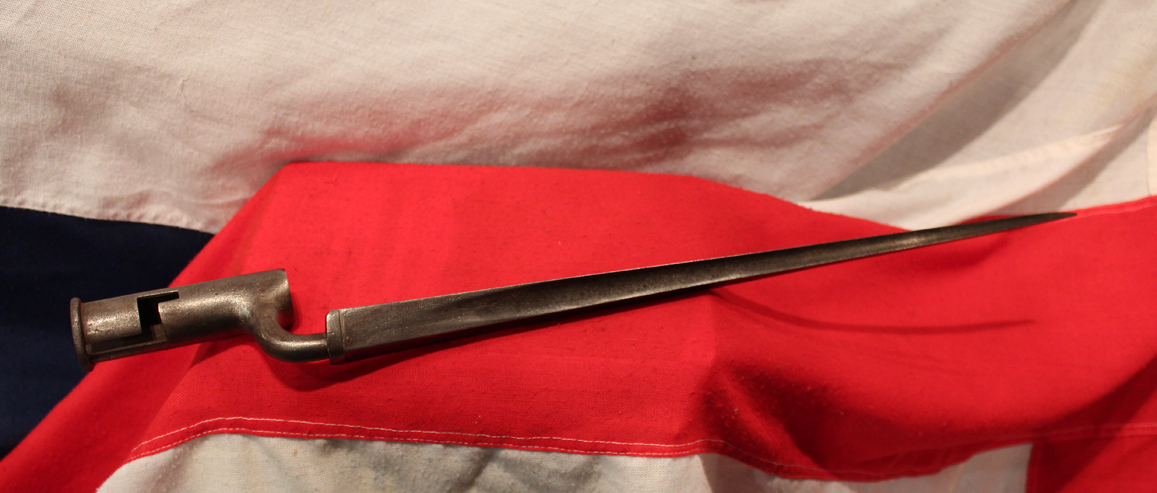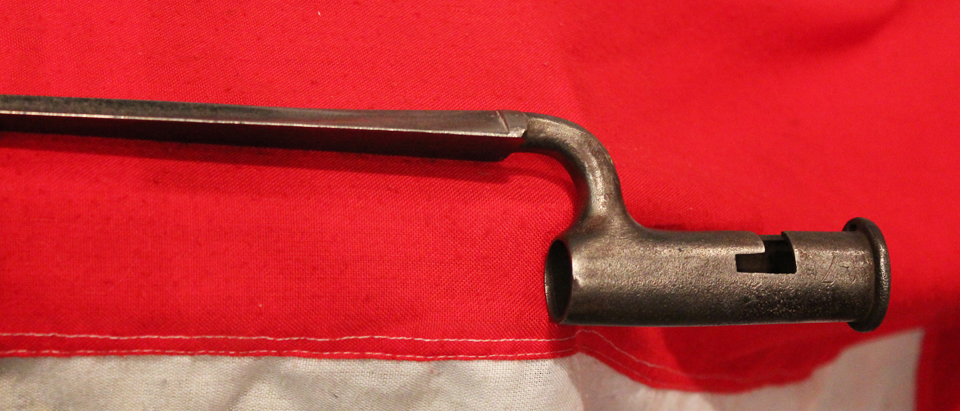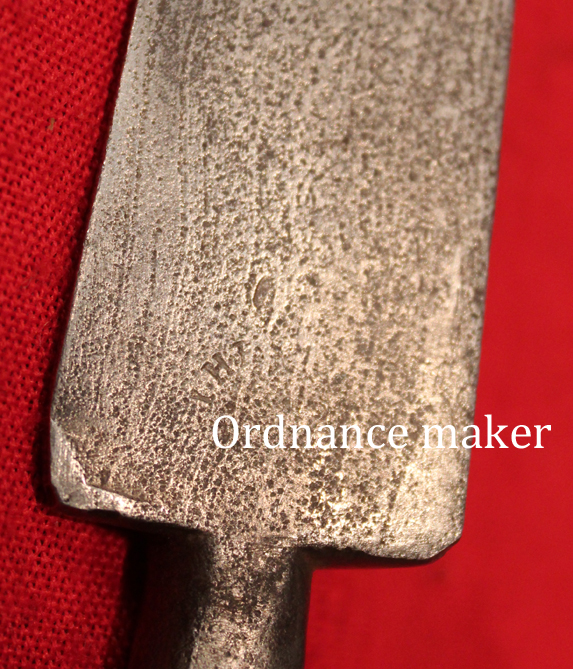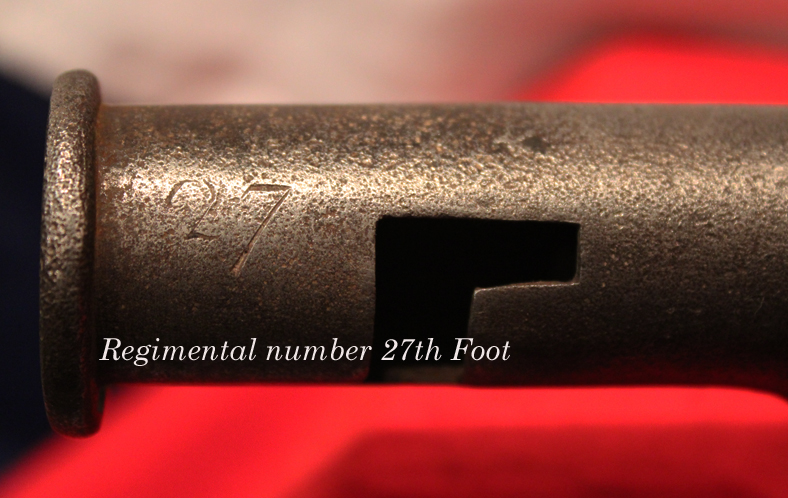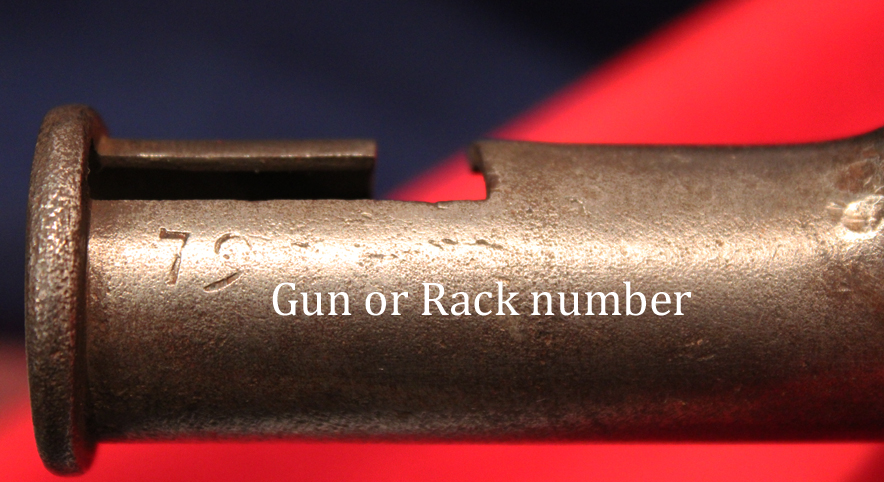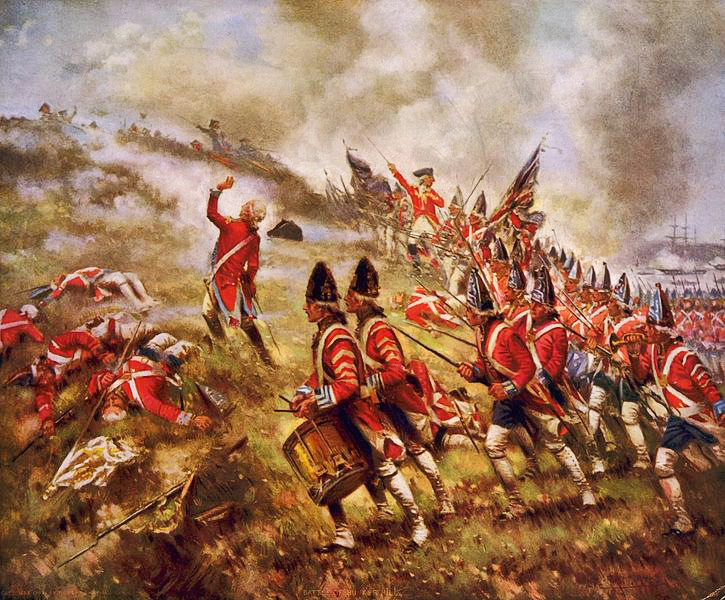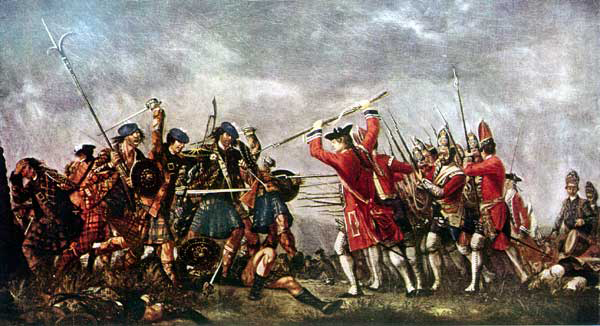A Very Fine, Early to Mid 18th Century, Regimental 27th Foot Inniskillings, 1st Land Pattern Brown Bess Musket Bayonet. One of the Most Desirable and Collectable Bayonets, Used By One Of The Most Famous of Regiments
Fine and original Land pattern Brown Bess socket bayonets are now as rare as hen's teeth. The 1st Land pattern Bess is now a very scarce and beautiful gun that can command 5 figure sums to acquire, thus its bayonet, that are just as historical and collectable, are a most affordable option by comparison. From the end of the first quarter to the mid 18th century, a Land Pattern 'Brown Bess' Bayonet. 21.5 inches long, approx. With a 17 inch blade, and a socket of 3.8 inches, thin squared socket rim.
Regimentally marked for The 27th (Inniskilling) Regiment of Foot, and also gun or rack numbered '79'. Partial maker marks visible, T.HA,, Possibly Thomas Hatcher who made several groups of ordnance contract Land Pattern muskets, and was appointed 'Master Furbisher' at the small gun office prior to 1750.
One of the great British Regiments that served in the Jacobite Rebellion, The Seven Years in America against the French and Native Indian forces, The American Revolutionary War, The Flanders Campaign 1793, the Capture of St Lucia from the French in 1796, the Peninsular War, The War in America 1812, and the Battle of Waterloo. This bayonet could easily have been present in many of this extraordinary conflicts covering over half a century. The 27th was an Irish infantry regiment of the British Army, formed in 1689 . The regiment was raised as local militia at Enniskillen by Colonel Zachariah Tiffin in June 1689, to fight against James II in the Williamite war in Ireland. They served successfully, most notably at the Battle of Newtownbutler, and their performance gained them a place on the English establishment in 1690 as a regular infantry regiment, as such they then fought at the Battle of the Boyne.
After peace returned to Ireland, the regiment was stationed around the world over the next half a century; from the Low Countries, West Indies, Minorca and to Spain. It formed part of the Government army sent to defeat the Jacobite Rising of 1745, participating in the Battle of Falkirk and in the Battle of Culloden. At this period they were commonly known as Blakeney's Regiment after the colonel-in-chief. In 1751, they were formally titled the 27th (Enniskillen) Regiment of Foot.
During the Seven Years' War (1756-63) the Regiment fought against the French in North America and the West Indies. In 1778 it returned to North America to take part in the War of Independence, but as the result of the alliance formed by the French with the American colonists, it again found itself involved in numerous expeditions against the French West Indian possessions. The war with France came to an end in 1783 but broke out again ten years later with the French Revolutionary Wars and the regiment took part in the Flanders Campaign of 1793. In 1796 the 27th took St. Lucia from the French, where its regimental colour was displayed on the flagstaff of the captured fortress.
Battle of Castalla, 13 April 1813
The 27th Regiment served throughout the Napoleonic wars including Egypt where it formed part of Sir Ralph Abercromby's force that fought the Battle of Alexandria against the French in 1801, the 2nd Battalion formed part of the garrison of that city after its capture. The 1st Battalion served in the Calabrian campaign and fought at Battle of Maida on 4 July 1806. In this engagement the light company fought in James Kempt's brigade while the one grenadier and eight line companies belonged to Lowry Cole's brigade.
The 1st Battalion entered the Peninsular War in November 1812 and participated in the Battle of Castalla and the Siege of Tarragona, both in 1813. The 2nd Battalion landed in Spain in December 1812 and fought brilliantly at Castalla on 13 April 1813. While formed in a two-deep line, the unit inflicted 369 killed and wounded on the French 121st Line Infantry Regiment in a few minutes. In the same action the entire brigade only lost 70 casualties. On 13 September 1813, the French surprised and cut the 2nd Battalion to pieces at the Battle of Ordal. In this action, the 2nd/27th lost over 360 men killed, wounded, and captured.
The 3rd Battalion disembarked in Lisbon in November 1808. It became part of Arthur Wellesley, 1st Duke of Wellington's army and fought at many of the key battles including Badajoz, Salamanca, Vitoria, the Pyrenees, Nivelle, Orthez, and Toulouse. The 3rd Battalion belonged to Cole's 4th Division throughout the war. At the Battle of Sorauren (Pyrenees), the 3rd/27th lost two officers and 41 men killed, nine officers and 195 men wounded, and seven men taken prisoner. At Toulouse, the unit lost two officers and 23 men killed, and five officers and 76 men wounded.
The 1st Battalion went on to fight at the Battle of Waterloo as part of John Lambert's 10th Brigade in the 6th Division. At about 6:30 PM, the French captured the key strongpoint of La Haye Sainte farm. After this success, they brought up several cannon and took the Anglo-Allied lines under fire at extremely close range. At this period, the 698-strong battalion was deployed in square at the point where the Ohain road crossed the Charleroi to Brussels highway. At a range of 300 yards, the French artillery caused the unit enormous casualties within a short time. At day's end, the 3rd Battalion had lost 105 killed and 373 wounded, a total of 478 casualties. The unit was described as "lying dead in a square". At the time of Waterloo, the soldiers of the 27th were dressed in red, short-tailed jackets, overall trousers, and a high-fronted shako. The facing colour was buff and it was displayed on the collar, cuffs, and shoulder-straps. The lace on the cuffs and jackets had square-ended loops
Code: 18951
1195.00 GBP

